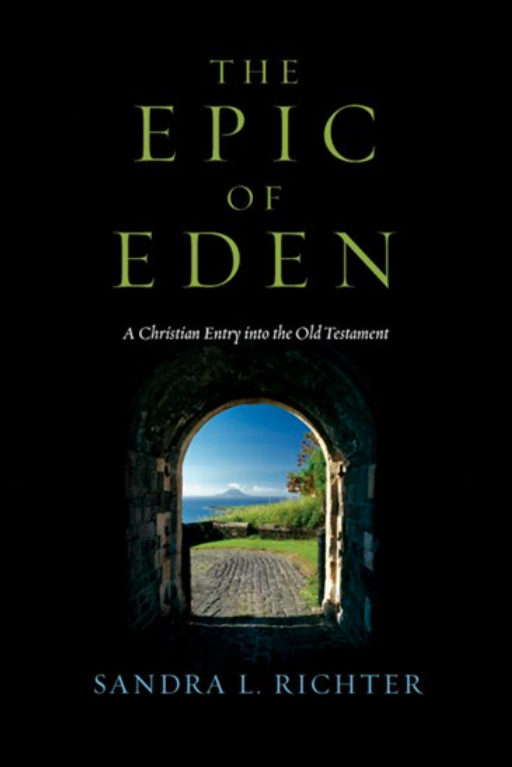
As a Christian, what is your story? Who are you? How did you become a Christian? How far back does your story go? In her book The Epic of Eden, Sandra Richter writes, “The Bible, in all its parts, is intended to communicate to humanity the realities of redemption” (15). That’s right.
In. All. Its. Parts.
The Old Testament is a wilderness. A foreign world. I live in Norway. Although it is not America, its culture is Western and therefore shares many similarities of what I am familiar with from America. But there are still confusing cultural differences. Jump to a present-day third-world country and the cultural differences–the way of thinking, buying and making food, relationships with people–abound. Jump back to Israel 2,500 years ago and it’s no wonder we’re so confused when we read the Old Testament.
Why should a widow’s brother-in-law marry her when her husband dies? Why was it acceptable for her to pull off his sandal and spit in his face if he refused (Deut 25:5-10)? Why does Judah tell Tamar she is more righteous than him (Gen 38:26), even though she deceived him into thinking she was a prostitute and had sex with him (vv14-19)? All this is in The Holy Bible? As a Christian, what do I do with these texts? As a Christian, what do I do with most of the Old Testament? Sandra Richter, the Robert H. Gundry Chair of Biblical Studies at Westmont College, answers all this and more in her book.
I’ve heard a lot of praise for this book over the years, but I never managed to pick it up and read it. Richter writes very well. All throughout the book as I read it, I would stop and tell Mari about some cultural insight I had just read that unlocked some part of Scripture for me. It didn’t take her long to understand that I really liked this book. Which is a good thing because Richter writes that many make the mistake of making this book “less” than what it is–less inspired, less than being as supernatural, less than being the definitive rule of faith for all believers (15). But the Bible is “the epic tale of God’s ongoing quest to ransom his creation” (15). However, just as a person suffering from Alzheimer’s disease can forget her children’s names, many in the church suffer from the same problem. She “watches her ancestors walk through the door with a similar response. Abraham, Isaac and Jacob are unknown and unnamed. The end result? The church does not know who she is, because she does not know who she was” (17).
Richter tries to rectify this in a few ways. She helps us to understand some of ancient Israel’s culture (ch 1), like how the concepts of the patriarchal family structure and redemption functioned in society. Next, Richter looks at the Old Testament’s timeline and its geographical location (ch 2). Knowing geography opens up the Bible to us. Instead of thinking of desert wastelands everywhere (as I often do no thanks to old Bible movies), Richter teaches that Dothan, the city where Joseph was sent to check on his older brothers, “was an important junction between the highways of the East and the major coastal highway to Egypt” (60). So it ought not to surprise us “a caravan that might be interested in purchasing a young Semitic slave” was passing through town that very day when the brothers through Joseph into a pit (61). Many of the cities Abraham passed through, such as Shechem, Bethel, Jerusalem, Hebron, and Beersheba, were urban centers in Canaan (again, not empty deserts).
Richter explains the concept of how covenants work in the Bible (ch 3), which is an extremely important concept to understand. She spends four chapters (chs 6-9) looking at the biblical covenants between God and Noah, Abraham, Moses, David, and new covenant believers. She two chapters looking at creation (ch 4, “Gods Original Intent”) and the new creation (ch 5, “God’s Final Intent”) and what God has been doing all along. The books ends with a final chapter on frequently asked questions (and endnotes; read them!).
Recommended?
Everyone has a dysfunctional closet. It’s that closet (or drawer) “where Jabba the Hut could be living, and no one would know it” (18). It’s where you have all your facts, but there’s no order to it. Richter wants to clean out the church’s dysfunctional closet. Many in the church have grown up hearing stories from the Old Testament. They know the stories. They know the people. They know many of the facts. But how do they hang together? How do they matter to me, to us, today? Richter’s goal is to provide structure, and in that (and in many other areas), she succeeds.
Pair this with Carmen Imes’ “Bearing God’s Name” (review) and Peter Leithart’s “A House for My Name” (review). Highly Recommended.
Lagniappe
- Author: Sandra Richter
- Publisher : IVP Academic (October 20, 2008)
- Paperback : 263 pages
- Video: The Great Cultural Barrier
Buy this from Amazon or IVP Academic!
Disclosure: I received this book free from IVP Academic. The opinions I have expressed are my own, and I was not required to write a positive review. I am disclosing this in accordance with the Federal Trade Commission’s 16 CFR, Part 255 http://www.access.gpo.gov/nara/cfr/waisidx_03/16cfr255_03.html.
Amazon Affiliate Disclosure: As an Amazon Associate I earn from qualifying purchases.

Thanks for this review! It has been on my list a long time too. I have read and reviewed her later book Stewards of Eden. As you mention, it also gave me unique insights into passages of Scripture.
LikeLiked by 1 person
Ah yes, I’ve been wanting to get that one. I’ve listened to a few of her talks on YouTube and really enjoyed them.
LikeLiked by 1 person